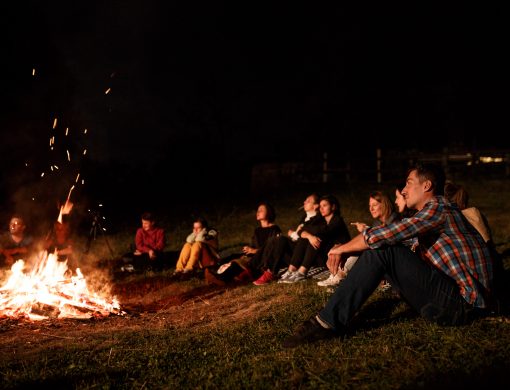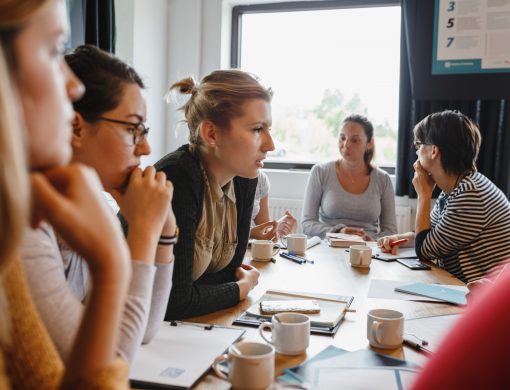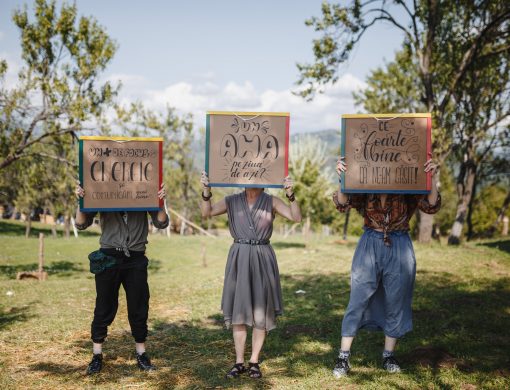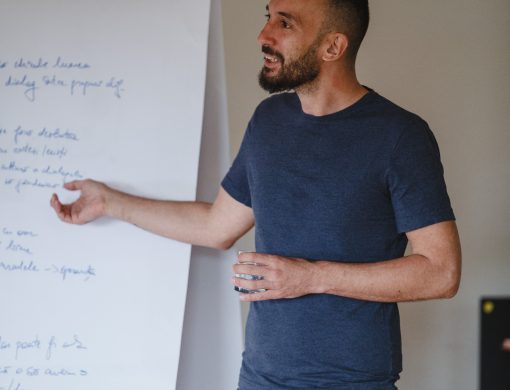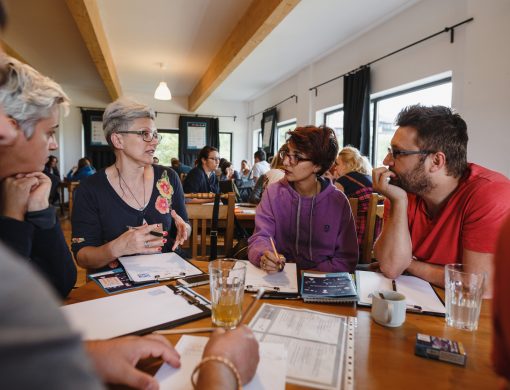by Vlad Tăușance
Text published in RAF’s 2017 Annual Report
Over the past four years, we have designed and managed the Marketing & Communication Polyclinic, an unprecedently complex training program aimed to help NGOs improve their public presence and campaigns. We had the chance to spend hundreds of hours listening to the stories of over twenty five organizations that are quietly reshaping Romania. For most of them this was a first: talking with ”strangers”, non-profit neophytes taking notes and getting excited. Good things followed: rebranding processes and digital fundraising campaigns, Big Ideas and small steps, media coverage and content co-creation.
Our premise was simple: the communication breakdown of the non-profit sector is primarily a question of culture, not necessarily a question of skills. Our program was betting on a contagion effect, as it aims to transfer know-how and enthusiasm by bringing together marketing and advertising professionals with game changers from NGOs. Both worlds are suffering from a degree of isolation and are to some extent “egosystems”. Both worlds are highly competitive when it comes to revenues and talent, exercising a sense of secrecy, following strict internal rules and procedures, and receiving little public recognition. The advertising and marcomm industries are striving for public impact and relevance. The NGOs often discover the hard way that marketing must be embedded if they aim for capacity building or for scaling their results. During workshops, lectures and speed mentoring sessions we have put these objectives together, in order to transform two “egosystems” in one ecosystem. KPIs left aside, this successful experiment generated some valuable insights.
Internalization is a rusty key
”NGOs are understaffed” is both an understatement and a global status quo. Therefore, marketing, PR, and advertising are perceived as chores or nice-to-haves, when compared to more pressing duties towards beneficiaries, constituents or funders. Although the solution to hire a marketing specialist might seem obvious, it is rarely a simple process. The first challenge is the scarcity of qualified talent who can make the shift from the commercial or corporate frame to the nonprofit one. This leads to a bumpy recruitment process, difficult onboarding procedures, inevitable failures and subsequent management frustrations. The second risk is the “silo-ization” of the communication department, seldom aligned with the organizational strategy or embedded in the management decisions. The distance between the management and the marketing executives allows the delegation of tasks, but not the delegation of power.
An alternative is opening up to a network of service providers, brand ambassadors, freelancers and strategic allies from the marcomm or creative fields. The main gain is time, as the organization can focus on decision making instead of executive tasks. A relationship based on equal positions also ensures relevant feedback and a more critical, therefore realistic, approach to goals and objectives. On a higher level, the bidirectional know-how transfer tunes in organizational cultures. We are witnessing the birth of the first agencies dedicated to the non-profit sector, as well as the formation of a generation of experts that can navigate both worlds.
Instead of trying to fit people into an often sketchy job, the option becomes to build long term partnerships with the marcomm field. These relationships rely on trust and translation accuracy, as the sectorial lingo can be misleading for both parties. These relationships take time. But they have already proven to be the most viable solution for big scale projects such as advocacy campaigns, national level fundraisers and the much needed alignment with the corporate sector and CRS programs.
Practice what you preach makes perfect
In a recent internal survey, most of the RAF grantees identify community development as their main focus for the next decade. It is a legitimate goal as their expertise, human resources, track records and tools can guarantee their success. In the meantime, the non-profit sector could also use a systemic community development process. The sporadic communication breakdown with the large audiences becomes endemic at an interorganizational level. A quick debrief reveals a plethora of underused and under-shared resources: studies and databases, reports and case studies, best practices and whitepapers, service providers and trainers, software and equipment. Set aside the tactical and logistic advantages that a minimal collaboration can ensure, we must explore the strategic benefits.
Based on the same survey, as well as on our field research, we know that the non-profit sector is heading towards an ”education rush hour”. There are tens of potentially convergent initiatives: advocacy projects, training programs for teachers, interventions addressing illiteracy or dropout rates, formal and non-formal educational project for high schools, alternative manuals and curricula upgrades. Both the corporate and the start-up sectors have expressed a huge interest in this field. Yet the initiatives remain insular in terms of impact, awareness and approach.
Creating a framework for information exchanges becomes a responsibility and a self-evident shortcut, far beyond the capacity development of the NGO sector. Shared campaigns, tasks and objectives can put large scale programs in speed in the other recurrent fields of interest such as: rural development, social innovation and entrepreneurship. Furthermore, this approach allows for organizational specialization, leading to new revenue streams based on existing expertise as well as sustainable human resources policies.
Like any coming-of-age story, the Romanian game changers need more than time. They need new friends. Translators. Connectors. Believers. Challengers. With a little help the sector can become a network. And islands can become a country.




